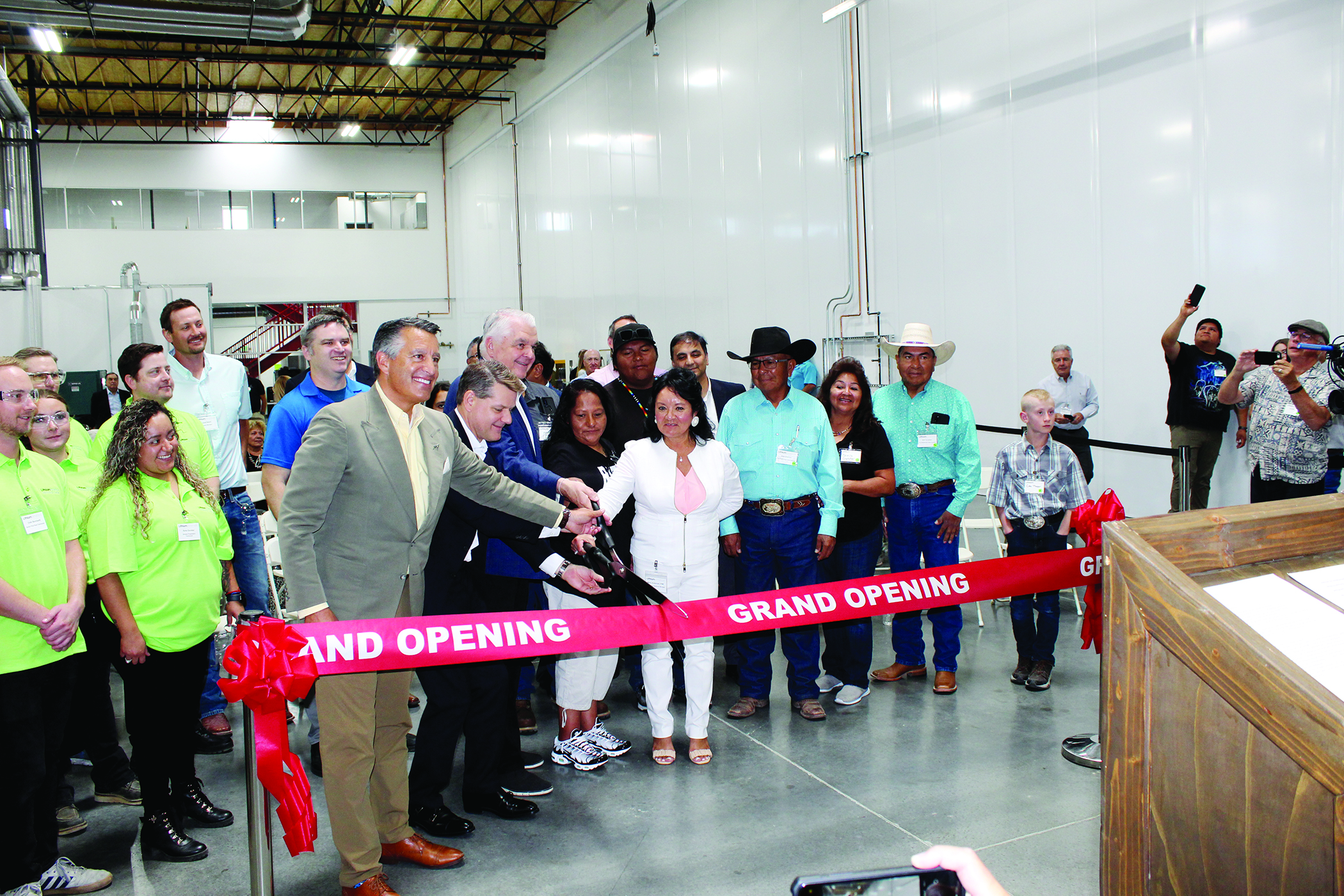President of North American Operations for Lithium Americas Alexi Zawadzki, far left, gave Ft. McDermitt Paiute Shoshone Tribe members, from right, Kyle Crutcher, Cauy Crutcher, Ario Crutcher and Rick Crutcher a tour of the Technical Center.
 Julia Maestrejuan/Nevada News Group
Julia Maestrejuan/Nevada News Group